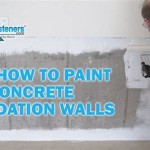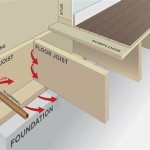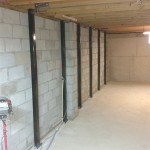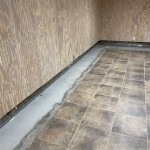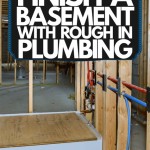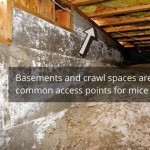How To Get Rid of Mold In a Basement Apartment
Mold in a basement apartment is a common problem stemming from the inherent characteristics of subterranean environments. Basements are naturally prone to higher humidity levels, lower temperatures, and inadequate ventilation, creating ideal conditions for mold growth. Addressing mold promptly and effectively is crucial not only for the preservation of the property but also for the health and well-being of the inhabitants. This article provides a comprehensive guide on how to identify, remediate, and prevent mold growth in a basement apartment.
Before embarking on any remediation efforts, it is essential to accurately identify the presence of mold. Mold manifests in various forms, often appearing as discolored patches on walls, ceilings, floors, or other surfaces. These patches can be black, green, brown, white, or even orange. A musty or earthy odor is another telltale sign of mold infestation, even if visible mold is not immediately apparent. In addition, heightened allergy symptoms, such as sneezing, coughing, runny nose, and skin rashes, may indicate the presence of mold, particularly in individuals with pre-existing sensitivities or respiratory conditions.
Visual inspection should be conducted thoroughly, paying close attention to areas prone to moisture accumulation, such as near pipes, windows, and foundations. Use a flashlight to illuminate dark corners and hard-to-reach areas. If visible mold is detected, it is advisable to take photographs as documentation for insurance purposes or for consultation with a professional mold remediation company. If the presence of mold is suspected but not readily visible, consider using a mold test kit, available at most hardware stores, to confirm its presence. These kits typically involve taking a sample of the air or a surface and sending it to a laboratory for analysis.
Once mold has been confirmed, the next step is to identify the source of moisture that is fueling its growth. Mold cannot thrive without a consistent source of water or humidity. Common sources of moisture in basements include leaky pipes, condensation, groundwater seepage, and inadequate ventilation. Thoroughly inspect all plumbing fixtures, including water pipes, drain pipes, and washing machine connections, for any signs of leaks. Check the walls and floors for dampness or water stains, which may indicate water intrusion from the outside.
Condensation occurs when warm, humid air comes into contact with cold surfaces, such as concrete walls or metal pipes. This is particularly common in basements during the summer months. Improving ventilation and insulation can help to reduce condensation. Groundwater seepage can occur through cracks in the foundation or through porous concrete. Proper grading of the land around the foundation, along with the installation of a sump pump, can help to mitigate groundwater seepage.
Key Point 1: Identifying and Addressing the Moisture Source
Locating and rectifying the moisture source is paramount to successful mold remediation. Simply cleaning up the mold without addressing the underlying moisture problem will only result in its recurrence. The following steps outline how to effectively address common moisture sources:
*
Leaky Pipes:
Repair any leaky pipes promptly and thoroughly. Consider replacing old or corroded pipes to prevent future leaks. Ensure proper insulation of pipes to minimize condensation.*
Condensation:
Improve ventilation by opening windows or using exhaust fans. Install a dehumidifier to reduce humidity levels in the basement. Insulate cold surfaces, such as pipes and walls, to prevent condensation from forming.*
Groundwater Seepage:
Ensure that the land around the foundation slopes away from the building to divert water away from the foundation. Install a sump pump in a low-lying area of the basement to remove excess water. Seal any cracks in the foundation walls or floor with a waterproof sealant.*
Poor Ventilation:
Install exhaust fans in bathrooms and laundry areas to vent moisture-laden air to the outside. Open windows regularly to promote air circulation. Ensure that the basement has adequate ventilation to prevent the buildup of humidity.Once the moisture source has been identified and addressed, the next step is to remediate the existing mold growth. The appropriate remediation method will depend on the extent of the mold infestation and the type of materials affected. For small areas of mold growth (less than 10 square feet), it may be possible to remediate the mold yourself using appropriate cleaning supplies and safety precautions. However, for larger infestations or if you are sensitive to mold, it is advisable to hire a professional mold remediation company.
Before starting any mold remediation, it is crucial to take necessary safety precautions to protect yourself from exposure to mold spores. Wear appropriate personal protective equipment (PPE), including a respirator mask, gloves, and eye protection. Cover any exposed skin with clothing to prevent contact with mold spores. Seal off the affected area from the rest of the apartment by closing doors and covering doorways with plastic sheeting.
For non-porous surfaces, such as tile, glass, and metal, mold can typically be removed with a mixture of mild detergent and water. Scrub the affected area thoroughly with a brush or sponge, and then rinse with clean water. For more stubborn mold stains, a solution of bleach and water (1 part bleach to 10 parts water) may be used. However, it is important to note that bleach can damage certain materials and should be used with caution. Always test the bleach solution on an inconspicuous area first to ensure that it does not cause discoloration or damage.
Porous materials, such as drywall, wood, and carpet, are more difficult to clean and may need to be removed and replaced if they are heavily contaminated with mold. If the mold growth is limited to the surface of the material, it may be possible to clean it with a HEPA vacuum cleaner. However, if the mold has penetrated deep into the material, it is best to remove and replace it.
Key Point 2: Safe DIY Mold Remediation Techniques
When undertaking DIY mold remediation for smaller infestations, adherence to safety protocols and appropriate cleaning methods is crucial. The following techniques outline safe practices for DIY mold removal:
*
Personal Protective Equipment (PPE):
Always wear a NIOSH-approved respirator mask, waterproof gloves, and eye protection to prevent inhalation or skin contact with mold spores.*
Containment:
Seal off the affected area with plastic sheeting and tape to prevent mold spores from spreading to other parts of the apartment.*
Cleaning Solutions:
For non-porous surfaces, use a mixture of mild detergent and water or a solution of bleach and water (1 part bleach to 10 parts water). For porous surfaces, use a HEPA vacuum cleaner or consider removal and replacement.*
Scrubbing and Rinsing:
Scrub the affected area thoroughly with a brush or sponge, and then rinse with clean water. Allow the area to dry completely.*
Disposal:
Dispose of any contaminated materials, such as sponges, brushes, and rags, in sealed plastic bags.After the mold has been remediated, it is essential to prevent it from returning. This involves maintaining low humidity levels in the basement, ensuring adequate ventilation, and addressing any ongoing sources of moisture. Dehumidifiers are highly effective in reducing humidity levels in basements and should be used regularly, especially during the summer months. Ensure that the dehumidifier is properly sized for the square footage of the basement and that it is emptied regularly.
Proper ventilation is also crucial for preventing mold growth. Open windows regularly to allow fresh air to circulate. Install exhaust fans in bathrooms and laundry areas to vent moisture-laden air to the outside. Consider installing a whole-house ventilation system to ensure that the entire apartment is adequately ventilated.
Regularly inspect the basement for any signs of moisture accumulation or mold growth. Pay close attention to areas prone to moisture, such as near pipes, windows, and foundations. Address any leaks or water intrusion promptly. Clean up any spills or condensation immediately. By taking these preventative measures, it is possible to maintain a mold-free environment in the basement apartment.
For complex or extensive mold infestations, engaging a professional mold remediation company is highly recommended. These companies possess the expertise, equipment, and experience necessary to safely and effectively remediate mold growth. They can also identify and address the underlying moisture sources that are contributing to the mold problem.
Professional mold remediation companies typically follow a multi-step process that includes assessment, containment, remediation, and prevention. During the assessment phase, they will conduct a thorough inspection of the property to identify the extent of the mold infestation and the sources of moisture. They will also take air and surface samples to determine the type and concentration of mold present.
During the containment phase, they will seal off the affected area to prevent mold spores from spreading to other parts of the building. They will also use negative air pressure equipment to remove mold spores from the air. During the remediation phase, they will remove and dispose of any contaminated materials, such as drywall, wood, and carpet. They will also clean and disinfect all affected surfaces. During the prevention phase, they will address the underlying moisture sources and provide recommendations for preventing future mold growth.
Key Point 3: Long-Term Prevention Strategies
Sustained mold prevention requires a combination of proactive measures to control humidity, ensure sufficient ventilation, and promptly address any water intrusion. The following strategies are crucial for maintaining a mold-free basement apartment:
*
Humidity Control:
Maintain a relative humidity level below 60% in the basement. Use a dehumidifier to remove excess moisture from the air, especially during humid months.*
Ventilation:
Ensure adequate ventilation by opening windows regularly or using exhaust fans in bathrooms and laundry areas. Consider installing a whole-house ventilation system.*
Water Leak Prevention:
Regularly inspect plumbing fixtures, pipes, and foundations for any signs of leaks or water intrusion. Address any leaks promptly and thoroughly.*
Proper Grading and Drainage:
Ensure that the land around the foundation slopes away from the building to divert water away from the foundation. Clean gutters and downspouts regularly.*
Regular Inspection and Cleaning:
Regularly inspect the basement for any signs of moisture accumulation or mold growth. Clean up any spills or condensation immediately. Use a HEPA vacuum cleaner to remove dust and debris.Homeowners insurance policies may provide coverage for mold damage, but the extent of coverage can vary depending on the specific policy and the circumstances of the mold growth. Typically, insurance policies will cover mold damage if it is caused by a covered peril, such as a burst pipe or a roof leak. However, they may not cover mold damage that is caused by negligence, such as failure to maintain the property or address known plumbing leaks.
It is important to review the insurance policy carefully to understand the extent of mold coverage. Some policies may have specific exclusions or limitations related to mold. If mold damage is suspected, it is advisable to contact the insurance company promptly to report the claim and determine the coverage available. Providing documentation of the mold damage, such as photographs and mold test results, can help to support the claim.
In summary, effectively managing and eliminating mold in a basement apartment necessitates a comprehensive approach. This includes thorough identification, diligent remediation, and, most importantly, proactive prevention strategies. Addressing the moisture sources, implementing proper ventilation techniques, and maintaining strict cleanliness protocols are vital to creating a healthy and inhabitable living space. By following the guidelines outlined in this article, residents can minimize the risk of mold growth and safeguard their well-being and the integrity of their property.

What You Need To Know About Mold From Basement Flooding

Why Are Basements Moldy How To Fix Prevent Mold In Homes Ecohome

Cleaning Mold Off Basement Walls A Comprehensive Guide

How To Clean Mold On Basement Walls And Prevent Reoccurrence

How To Clean Mold In A Basement With S Wikihow

How To Get Rid Of Mold In The Basement 8 Easy Steps

How To Clean Mold In A Basement With S Wikihow

What To Do If You Find Toxic Black Mold Safewise Com

How To Clean Mold In A Basement With S Wikihow

Basement Mold Removal Black Remediation
Related Posts

